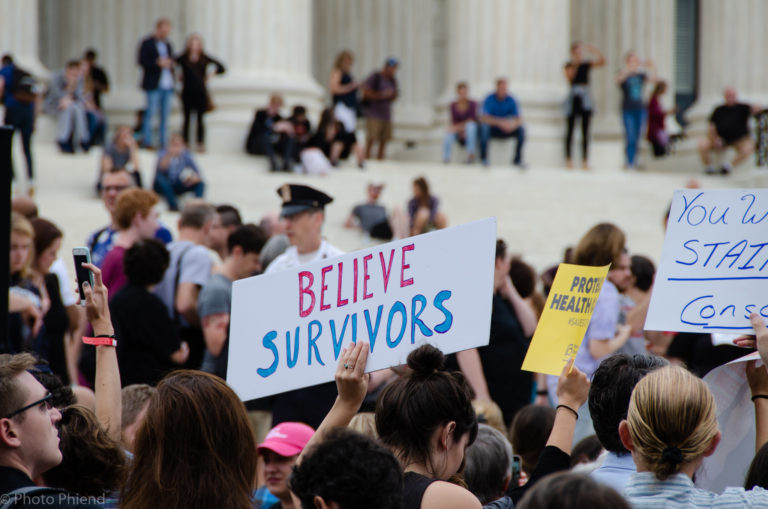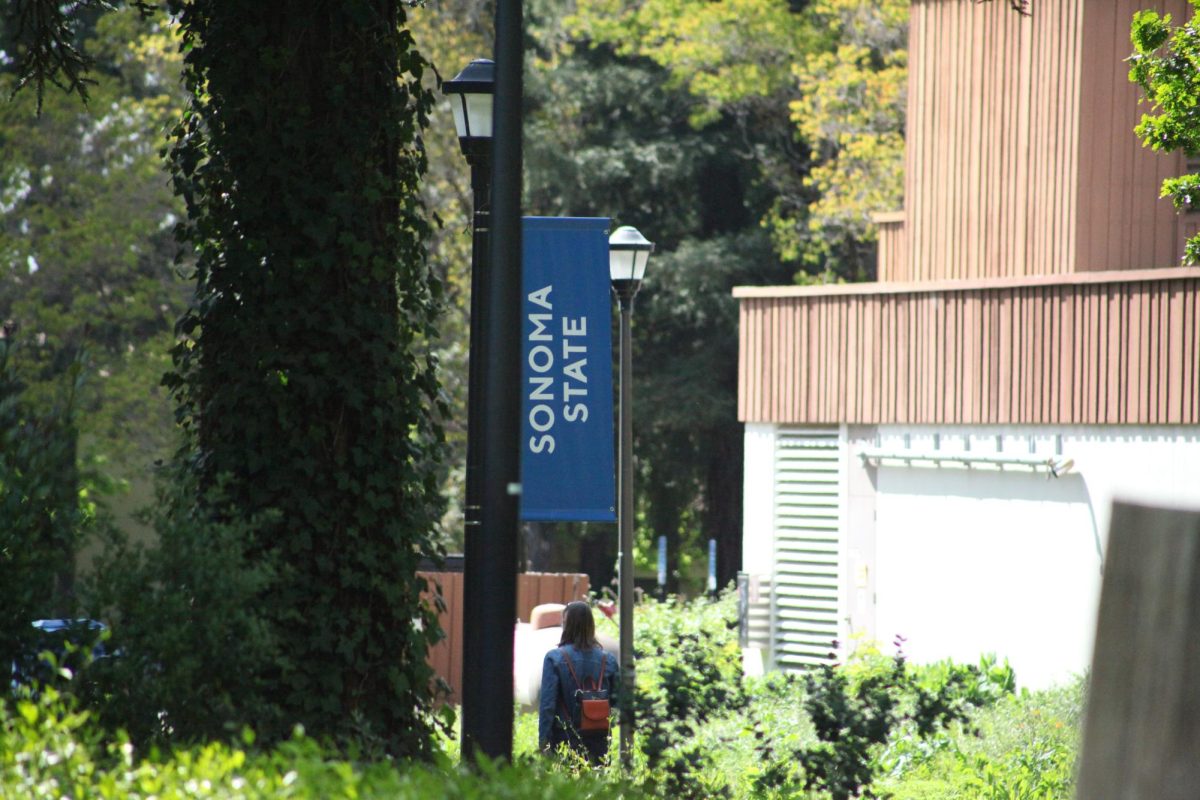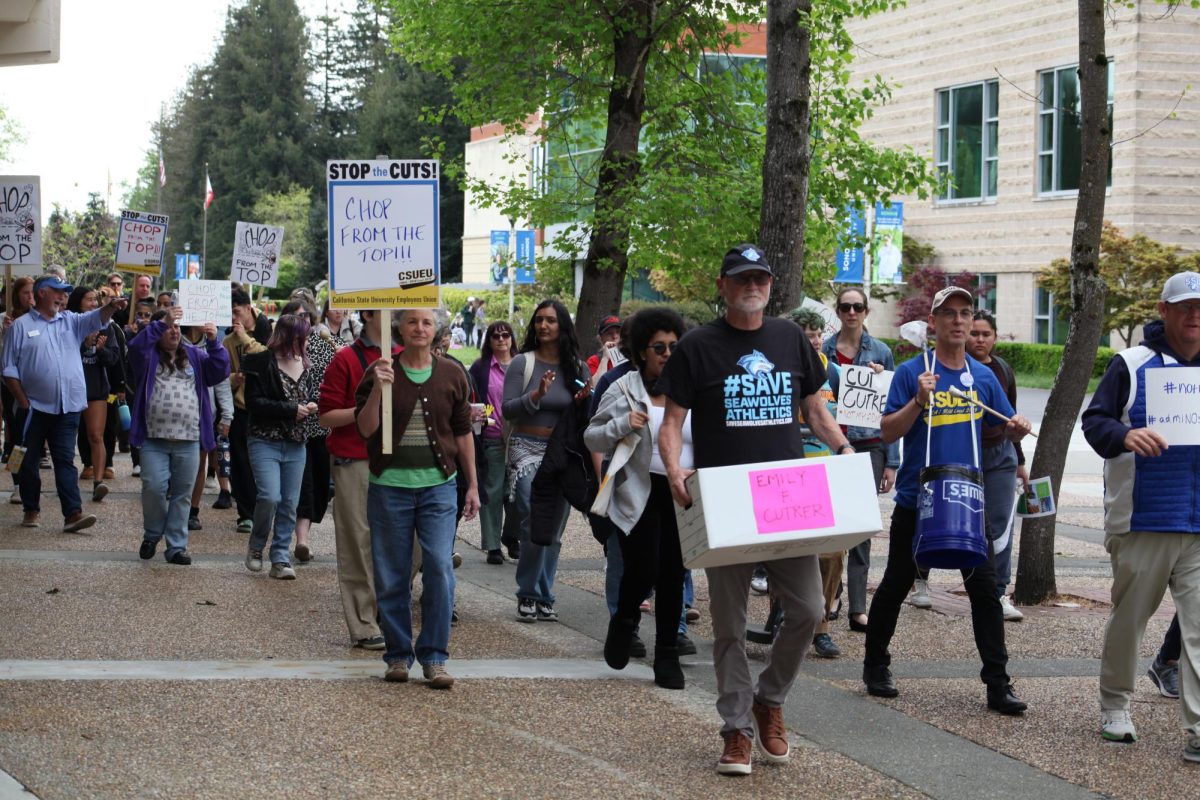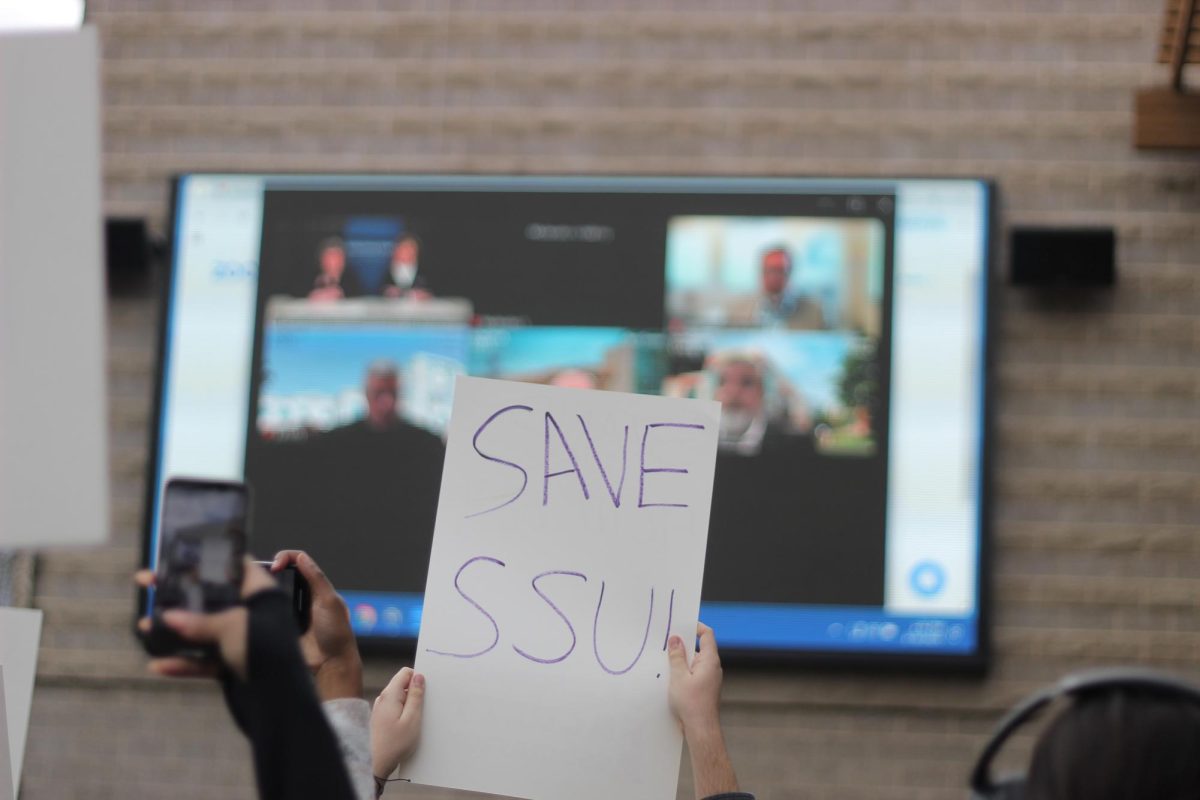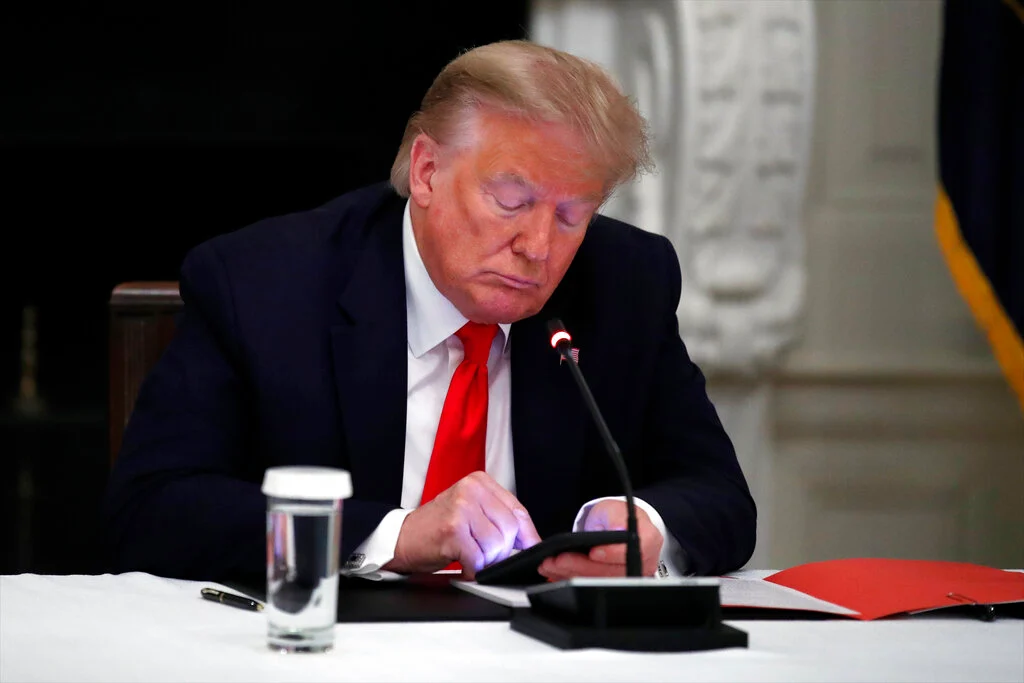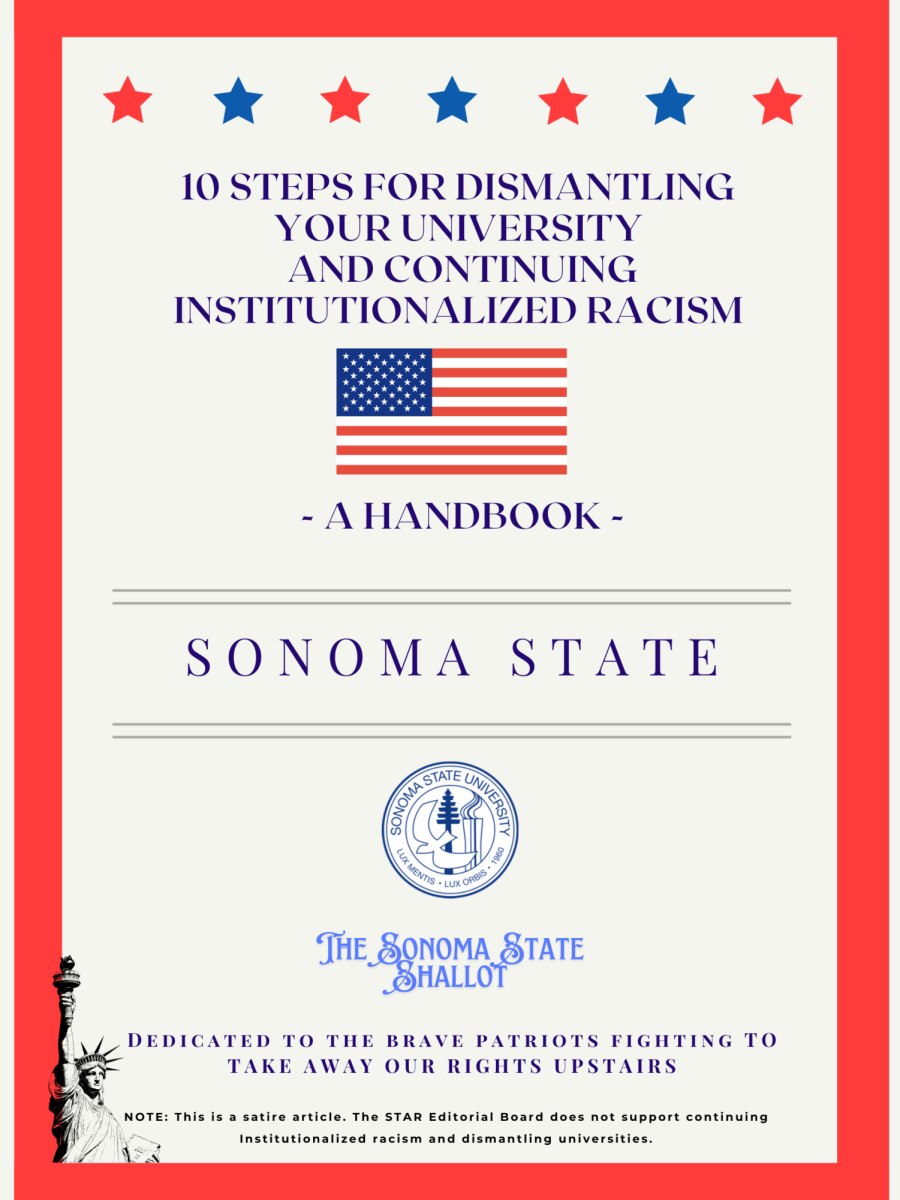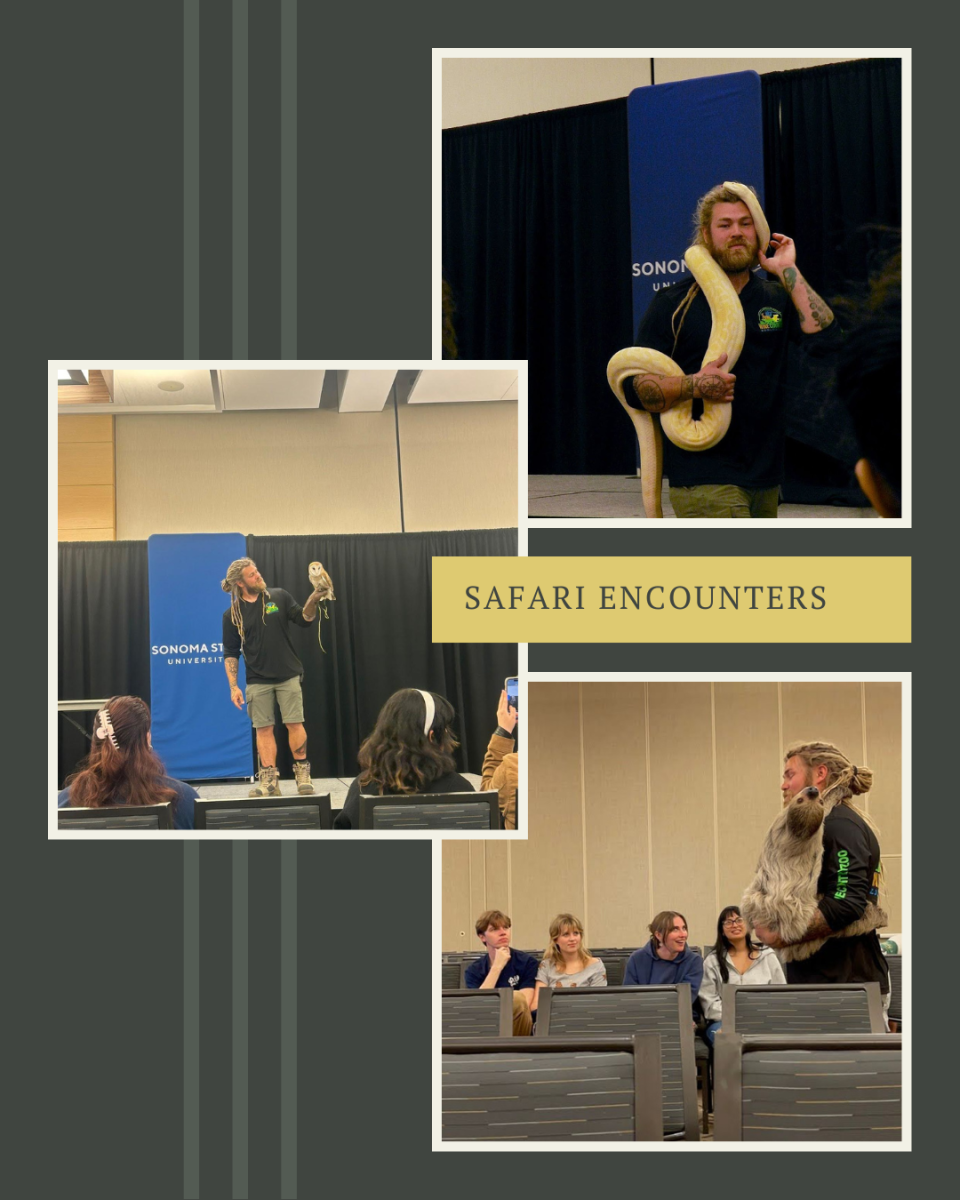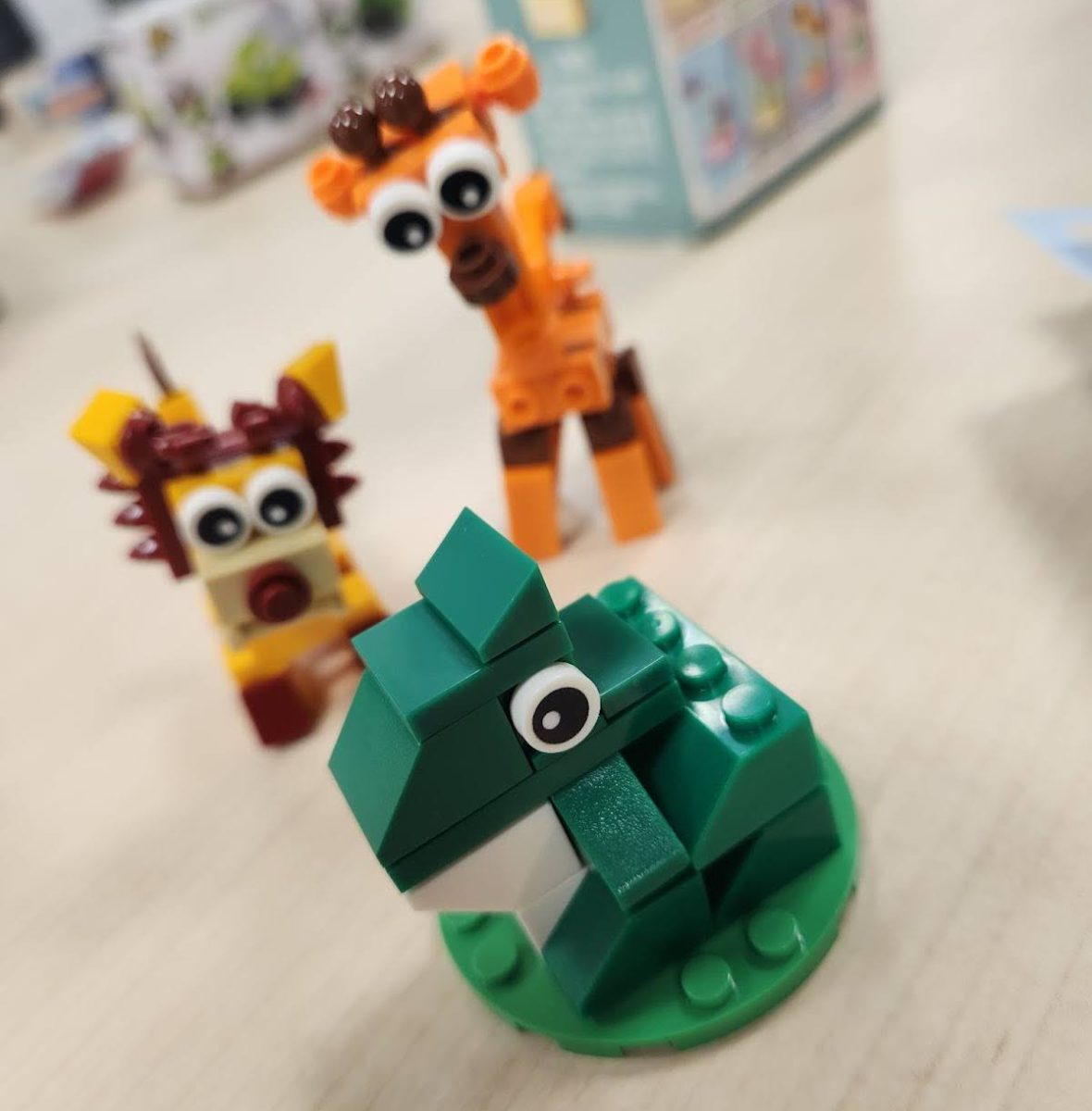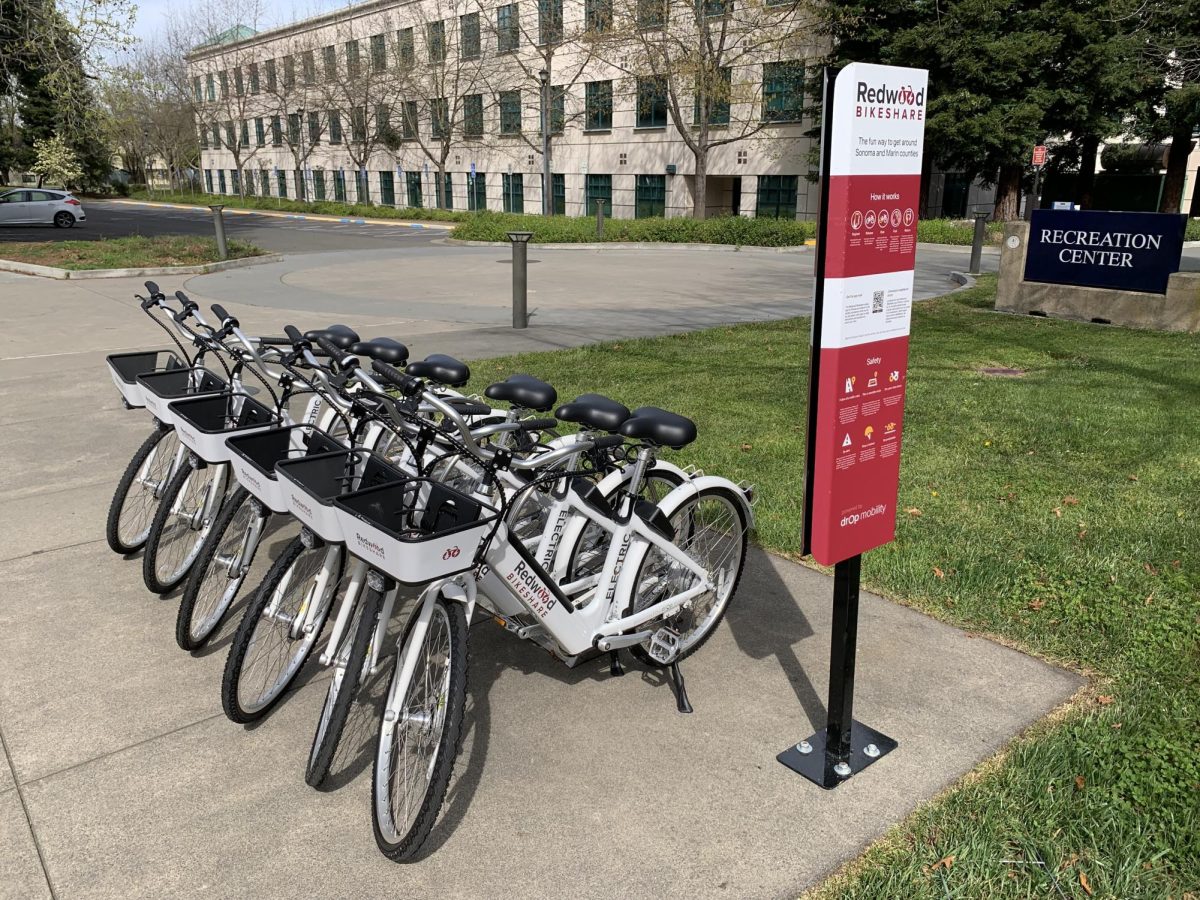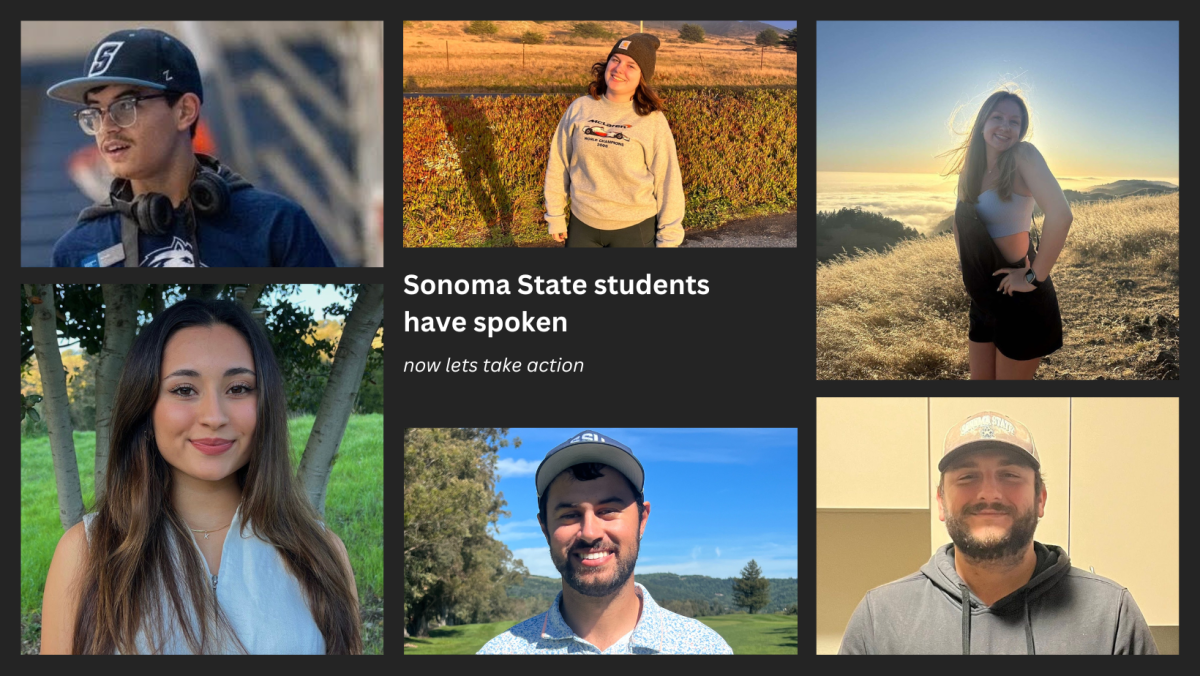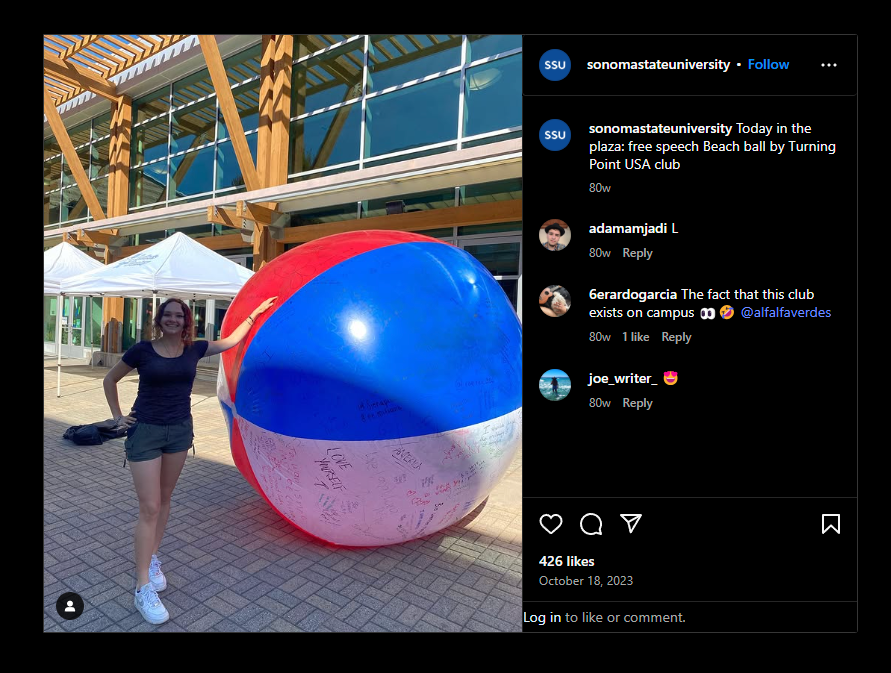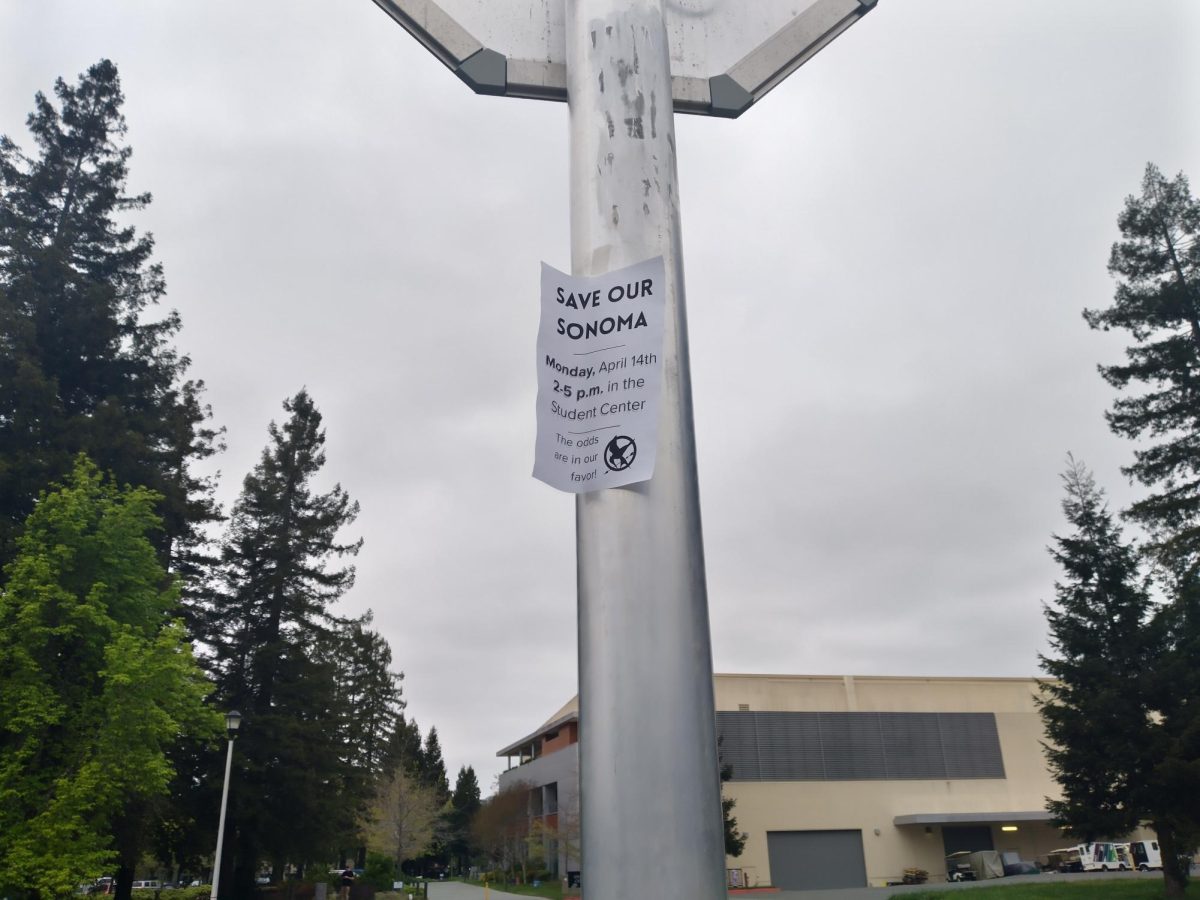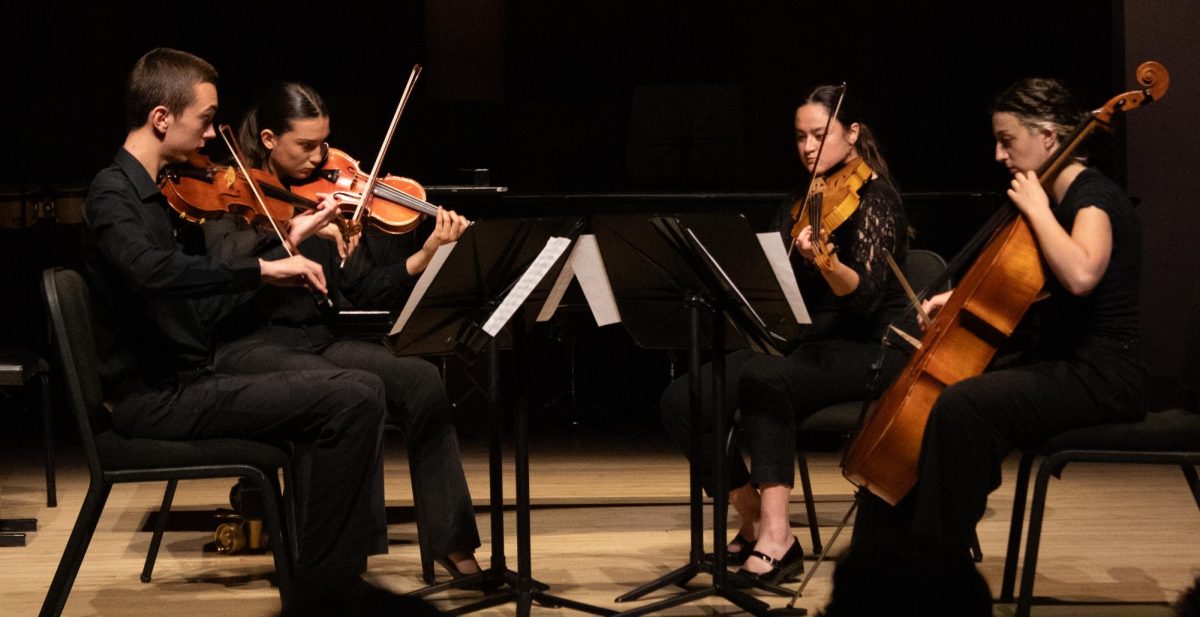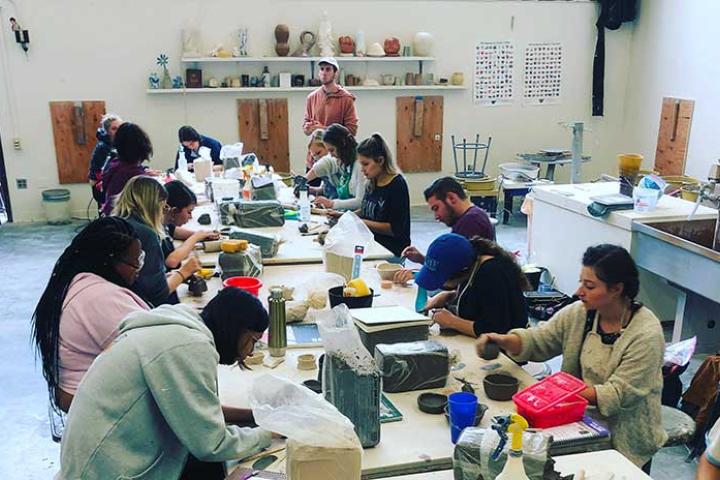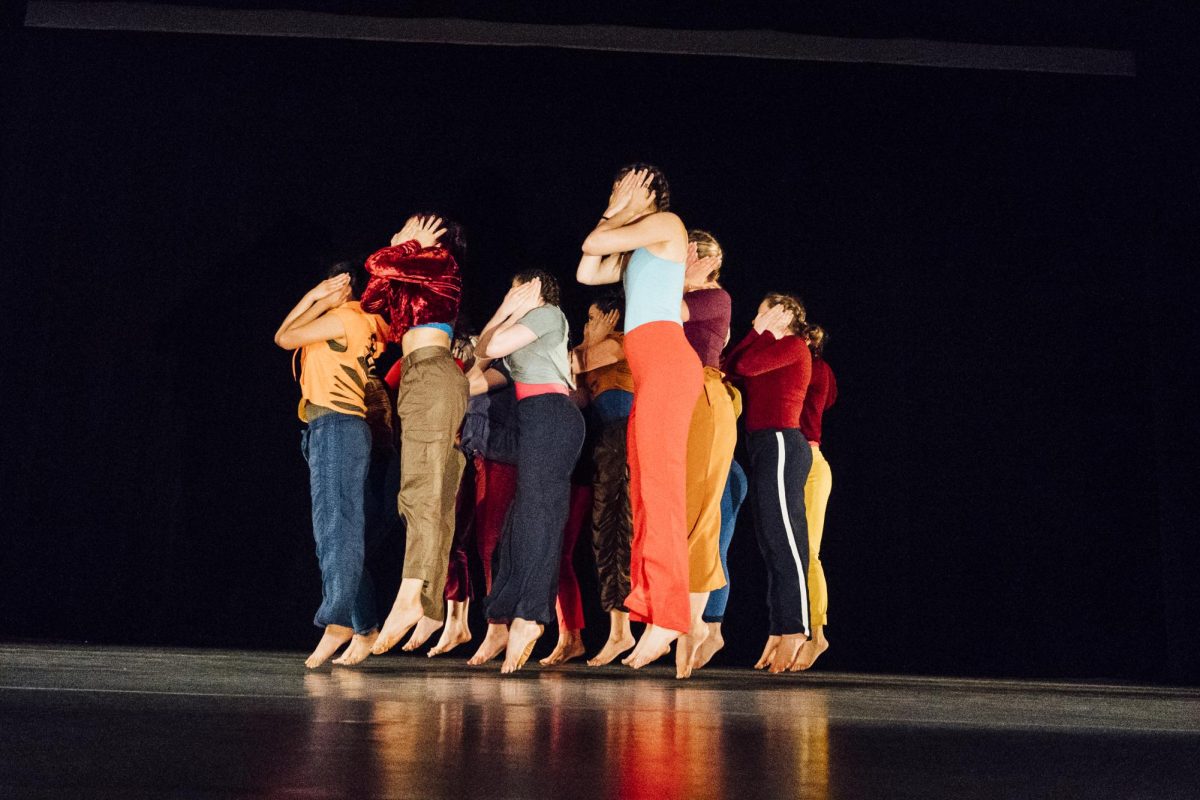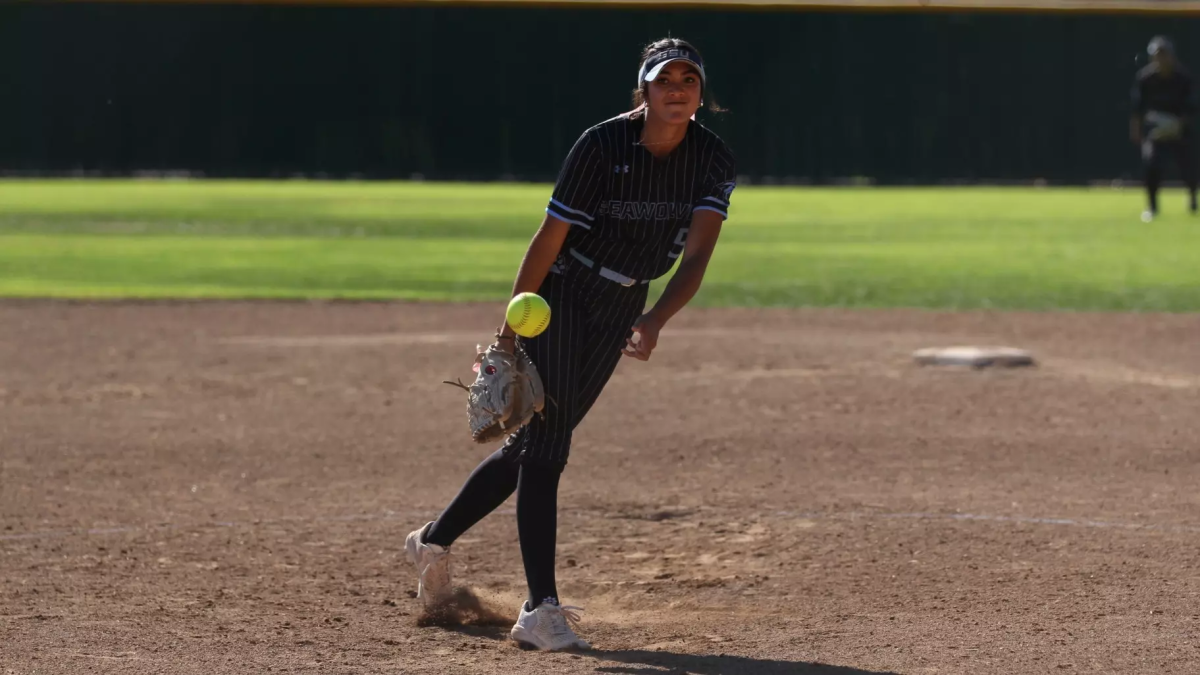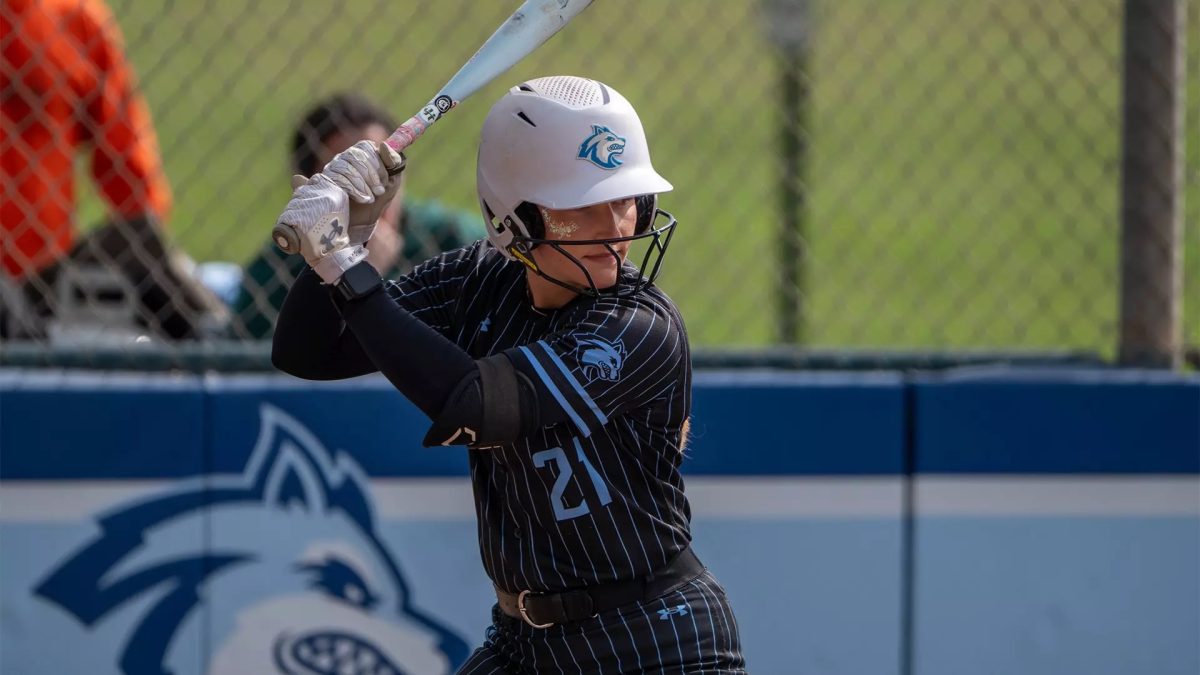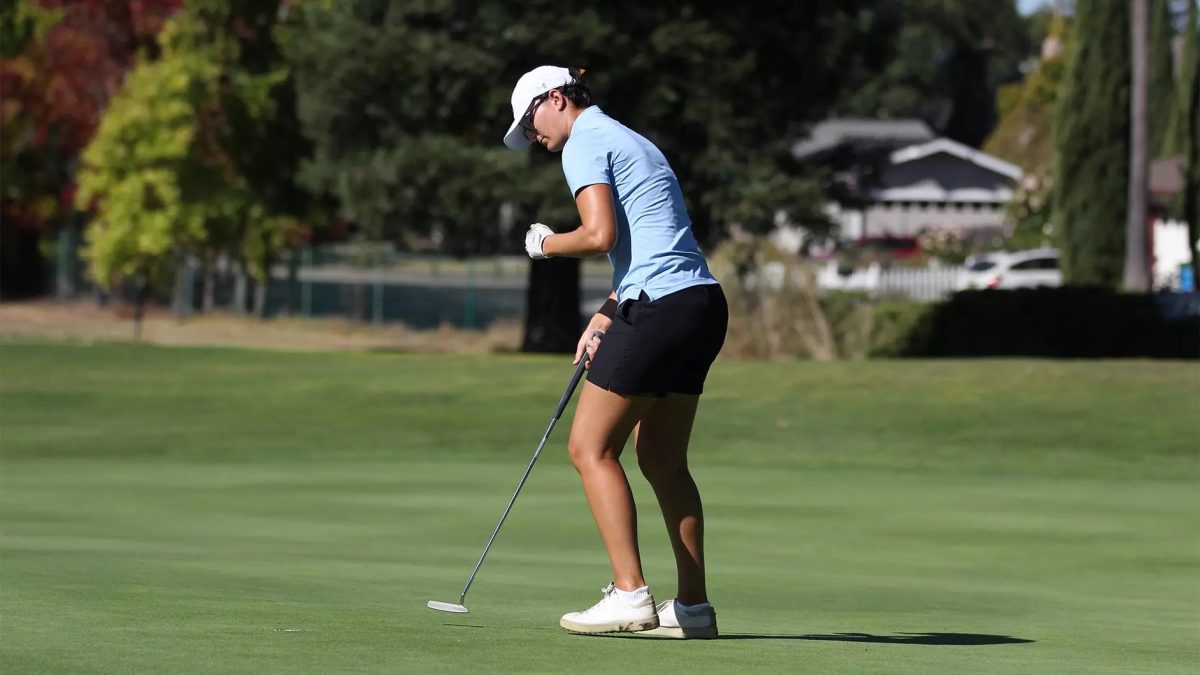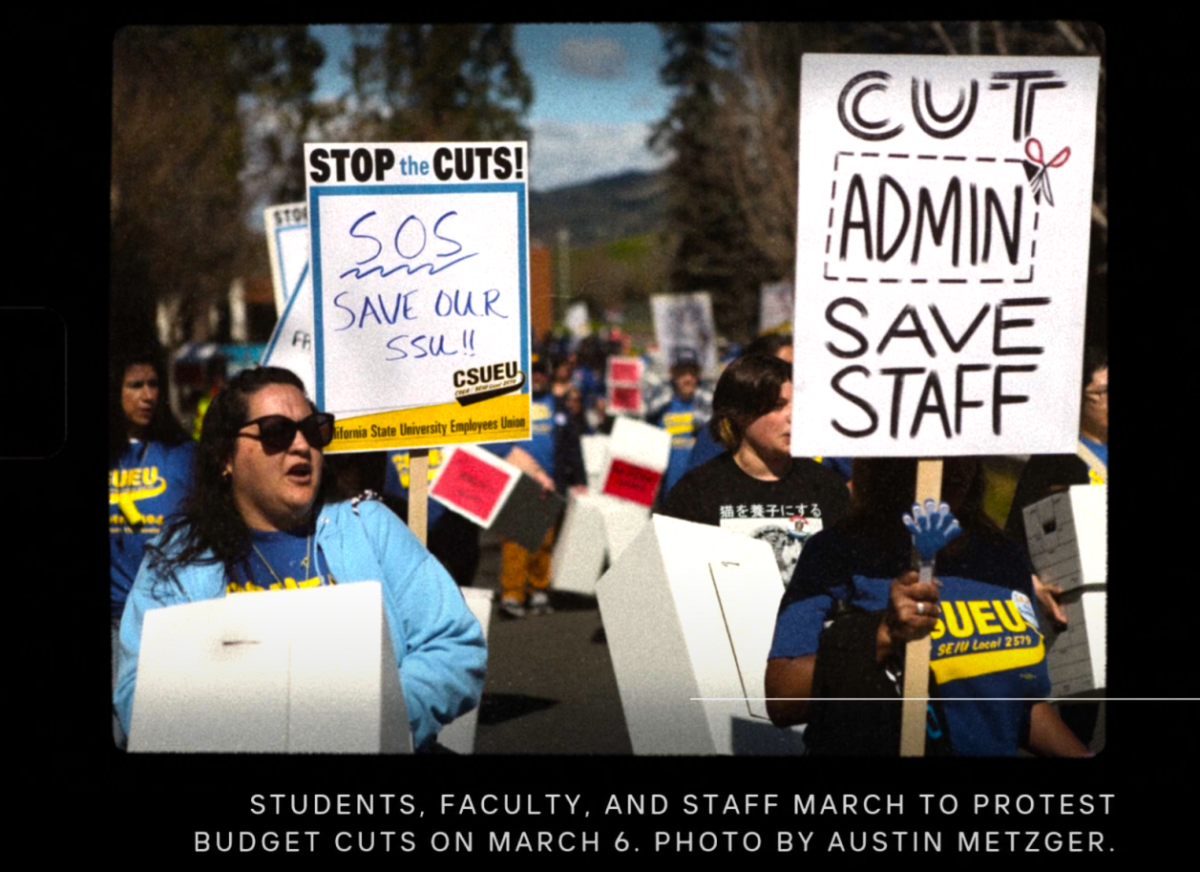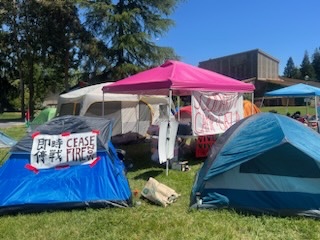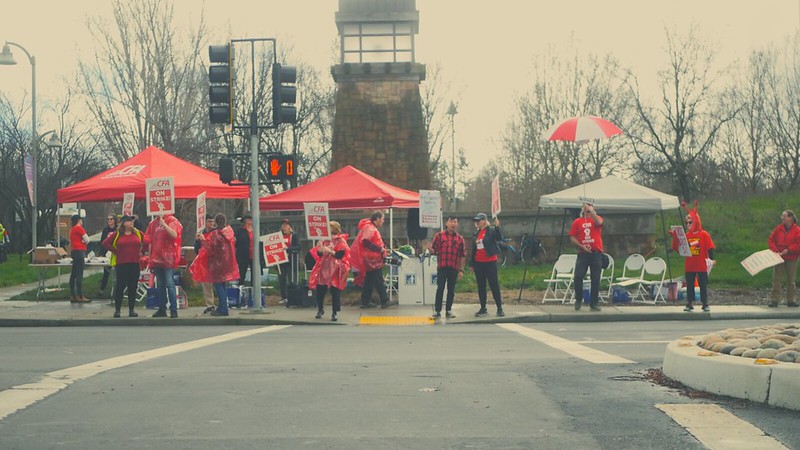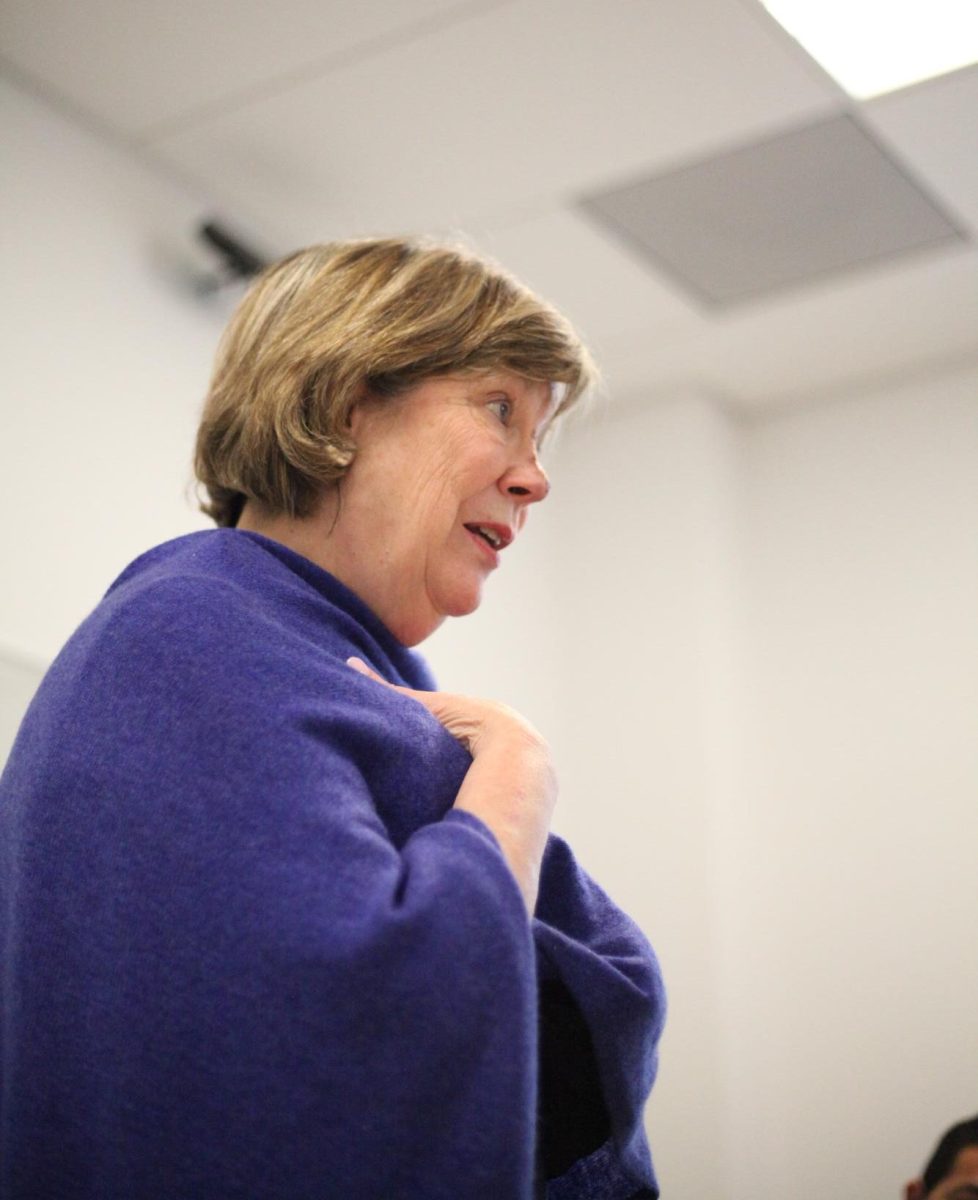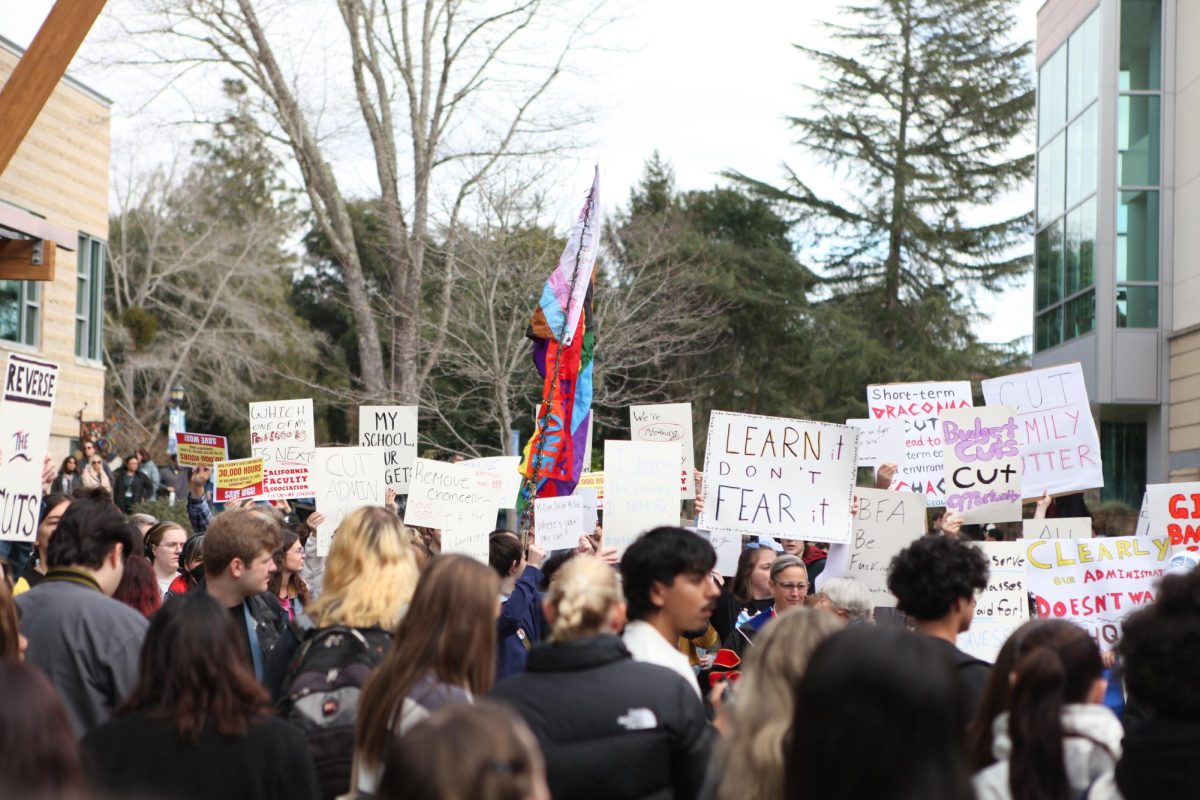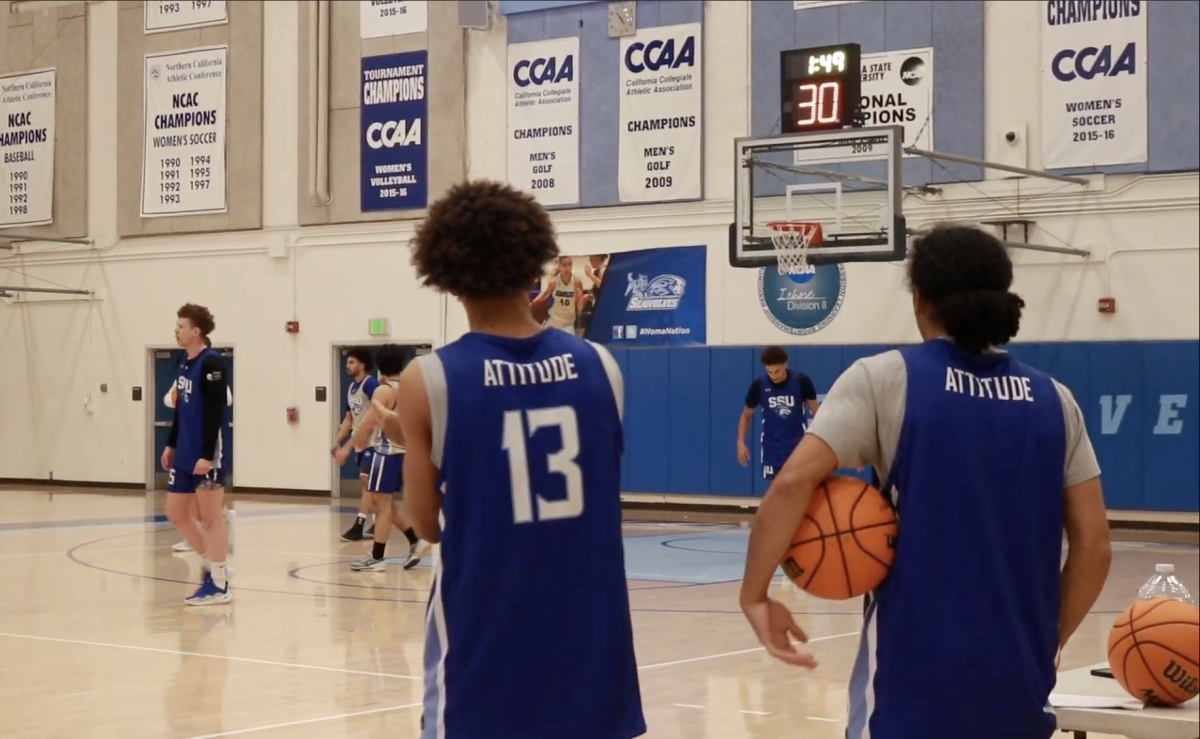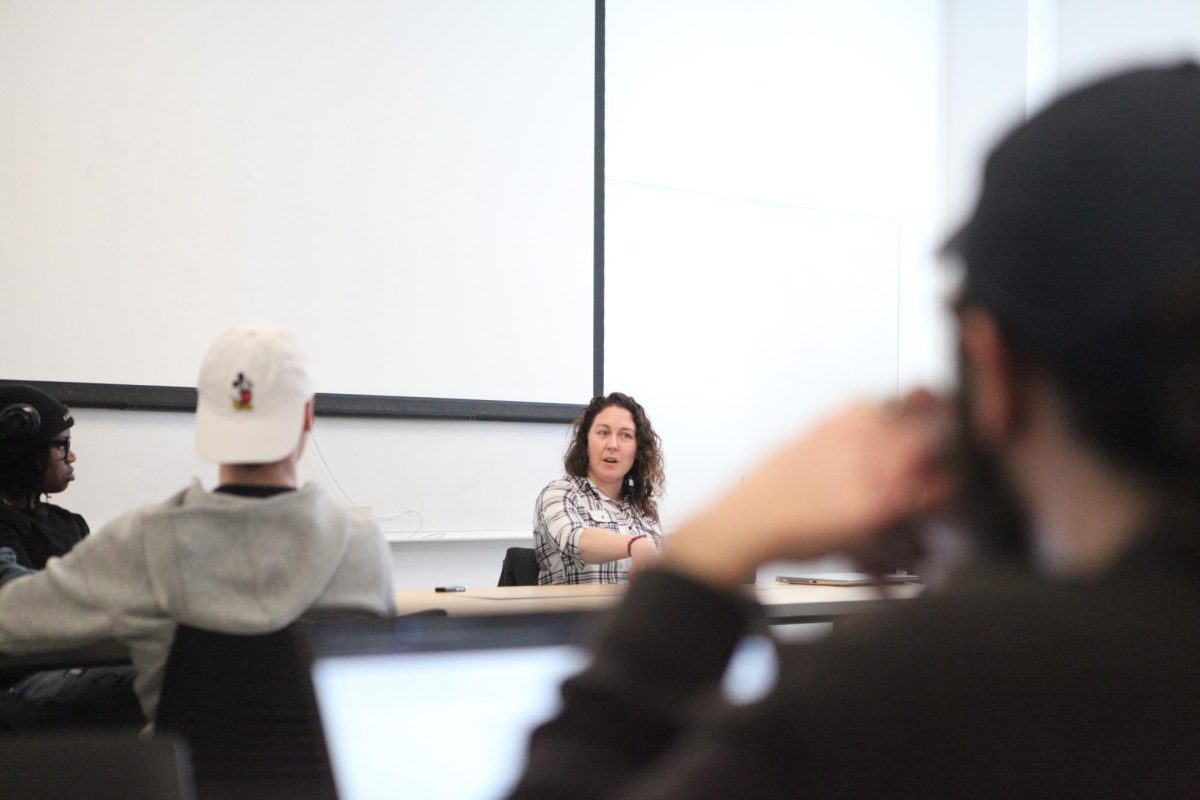In an exclusive interview on Feb. 18, the Sonoma State Star sat down with the school’s interim President Emily F. Cutrer, to discuss the budget cut crisis and other issues affecting everyone at Sonoma State.
From discussing the elimination of the athletics department to the introduction of AI initiatives across California State University campuses, Cutrer provided insight into the decision-making process behind program cuts and how students are reacting to them.
During the conversation, Cutrer addressed the factors leading to the university’s financial struggles, including declining enrollment and reduced state funding. She explained the administration’s reasons behind cutting certain programs and discussed potential solutions to stabilize the budget. Meanwhile, students and faculty have voiced concerns about the impact of these changes, with many questioning the university’s priorities and the long-term effects on academic opportunities.
Editor’s Note: Since this interview, Cutrer has announced they would deliver a plan in under 60 days.
Artificial Intelligence in Higher Education
The California State University system has recently introduced an initiative to incorporate artificial intelligence into academics, a move that has drawn mixed reactions.
STAR: We want to know about the whole AI implementation that every CSU is doing, we thought all CSUs were all against AI? Now all of a sudden, [the CSU System] seems on board with having AI being prominent. Can you explain the reasoning behind this decision?
Cutrer: I can’t put words in the decision-maker’s mouth. But I can venture a few ideas that I think are important and that I believe based on the conversations we’ve had at the board of trustees meetings led to this decision. AI is not going away, we all need to learn to use it productively and just keeping it away from students is not going to help anybody learn how to use it productively. There are, as we all know, some great big CSUs. They have more economies of scale and more resources than the smaller institutions do. A lot of the great big institutions were putting resources into the AI program that we see coming to the CSU, and the thought was all students should have access. Sonoma State would have been very hard pressed if it would not have been possible for us to gain the same kind of access that the other campuses had. The AI initiative to me – it’s scary. At my age, it’s really scary. But you need to learn to figure out how to do it right, because if you don’t figure out how to do it right – somebody’s going to do it wrong against you.
STAR: We noticed that there is probably going to be a bit of an enrollment drop-off because of the recent cuts, but do you think that maybe investing in AI and rolling out this technology for students for free will be a draw for students to come to the university eventually?
Cutrer: Yes. That and other things, I think, will be a draw for people to come to this university. I know there’s been a lot of tension and I understand it. And I’m really sad about the programs that we are having to cut, but there are 48 degree programs left. There are wonderful faculty in those degree programs. This will still be a small campus. You’ll still get the kind of attention and one-on-one care that I think many of us value in a smaller institution. That’s not going away. There’s something that we really need to do as a campus. And that is really helping students see the pathway from college through to the first step in their career, to their first job. We’re looking to develop a very robust career center, as a place, but also a career development program for students. We’re still going to be a great campus, there’s just no doubt in my mind about that.
STAR: Do you not find it hypocritical that we are now telling students that we can use the AI programs such as ChatGPT when in the past, we’ve been punished for using AI programs?
Cutrer: I wouldn’t call it hypocritical. I instead would call it that all of us can learn, and that means faculty, staff, administrators as well. I would say instead, we’ve had a learning curve about it and this learning curve has moved upward. What I recall hearing from people is the greatest concern as a faculty member for AI was that students would just get their papers from Chat GPT. And I can certainly understand why that would be of concern, but we’ve got some great folks here on campus who’ve worked with our faculty to see how instead of seeing that as a threat to originality and creativity, we can see it as a boost to it. So, bottom line, I don’t see this as hypocritical.”
STAR: Will students who had previously been penalized for using AI have those penalties redacted?
Cutrer: Well, I don’t know. I haven’t heard that question raised. That would not be my decision. That would go through a shared governance process where members of committee, and I think it would probably be the academic policy committee would look at it and decide what the best thing to do would be.
STAR: So, it would be a case-by-case basis?
Cutrer: I don’t think it would be necessarily a case-by-case basis. That would be the policy that a Senate committee would develop and their policy might be case-by-case. Their policy might be something completely different that I haven’t even thought of. I would imagine, if I were on the committee, I’d look around the country to see how other people had done it and then adapt it to my own situation, but I don’t know what they plan to do or will do about it.
STAR: How would the implementation of AI interfere with plagiarism policies and how would it interact with that?
Cutrer: There are some areas of the university where faculty have more say than the president of the university. And/or the chancellor of the university system, and that’s around academic policies having to do with exactly the kind of subject you’re talking about. Plagiarism and plagiarism policies go to the heart of what an academic does so it really is important that that come out of faculty discussion and faculty governance. Ultimately, as president, I’d have to sign off on a policy, but faculty need to talk about it. They need to think about it and develop it.
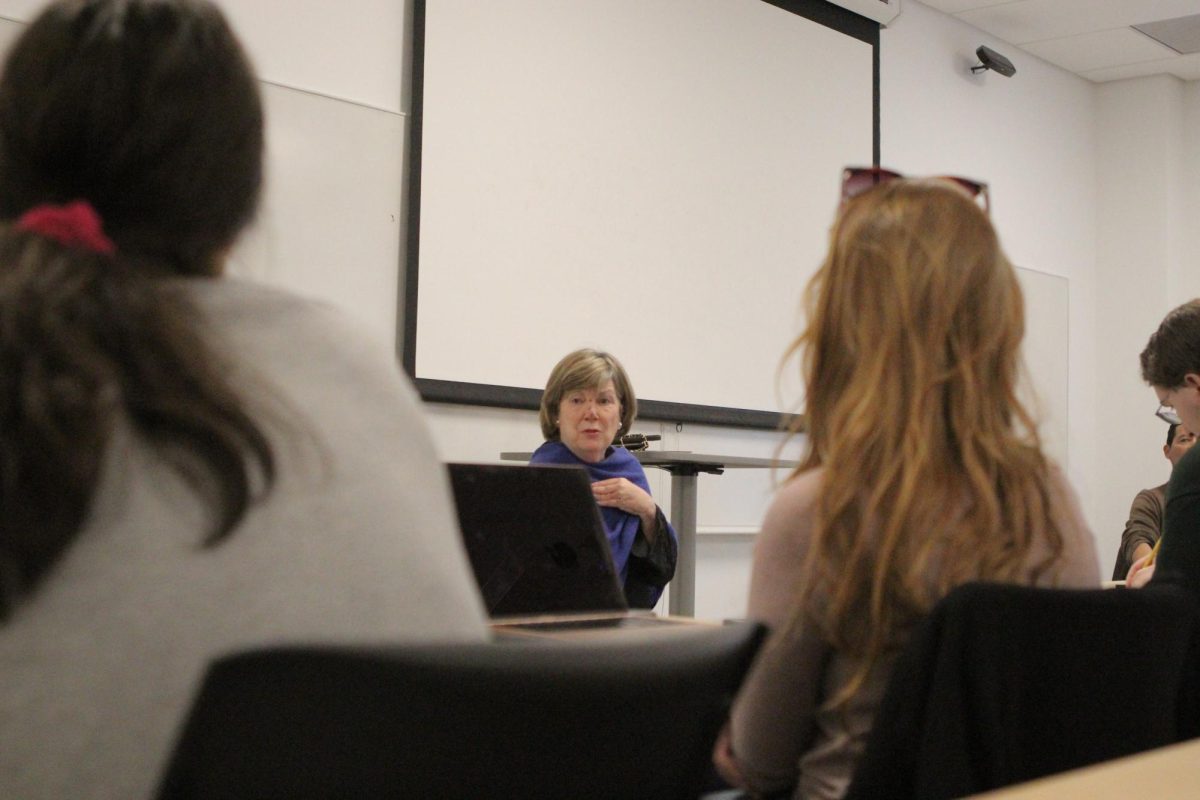
The Future of Sports at Sonoma State
Cutrer confirmed to the Sonoma State Star that even with all the support students and faculty have given to reverse the sports cuts, it’ll still be cut.
STAR: The sports cuts is a little tragic, I feel like we can all agree to that, but how long would you suspect that it’s going to take for the sports program to come back and how would you go about implementing it?
Cutrer: I don’t know how long it will take for a sports program to come back or frankly, if intercollegiate NCAA sports will ever come back, they may, they may not and I, as an interim president, will probably not be here to make that decision. We have a very vibrant club sports program that while you have to try out sometimes for the club sport, it’s open, it’s open to anybody and anybody can, can start a club so, we’re going to be emphasizing that. I don’t mean to not directly answer your question, but there’s not a direct answer except I don’t know.
STAR: We know there’s just been a lot of support recently to try to save the Sonoma State sports program. We had a lot of Sonoma State hall of famers come to support games. We had Former SSU star and rising NBA player Jaylen Wells come to campus showing big support. What are your overall thoughts? Do you feel like, does this support kind of change the decision of the higher-ups into sports, you know, cutting?
Cutrer: Unfortunately, no. I wish it could be different. But it isn’t because people don’t like athletics that they’re being eliminated for now. It has nothing to do with that. It’s a simple matter of economics. And I’ll just say this, priorities. Because of the budget gap we have to fill, if we didn’t fill some of it with athletics, it would have to be more academic programs.
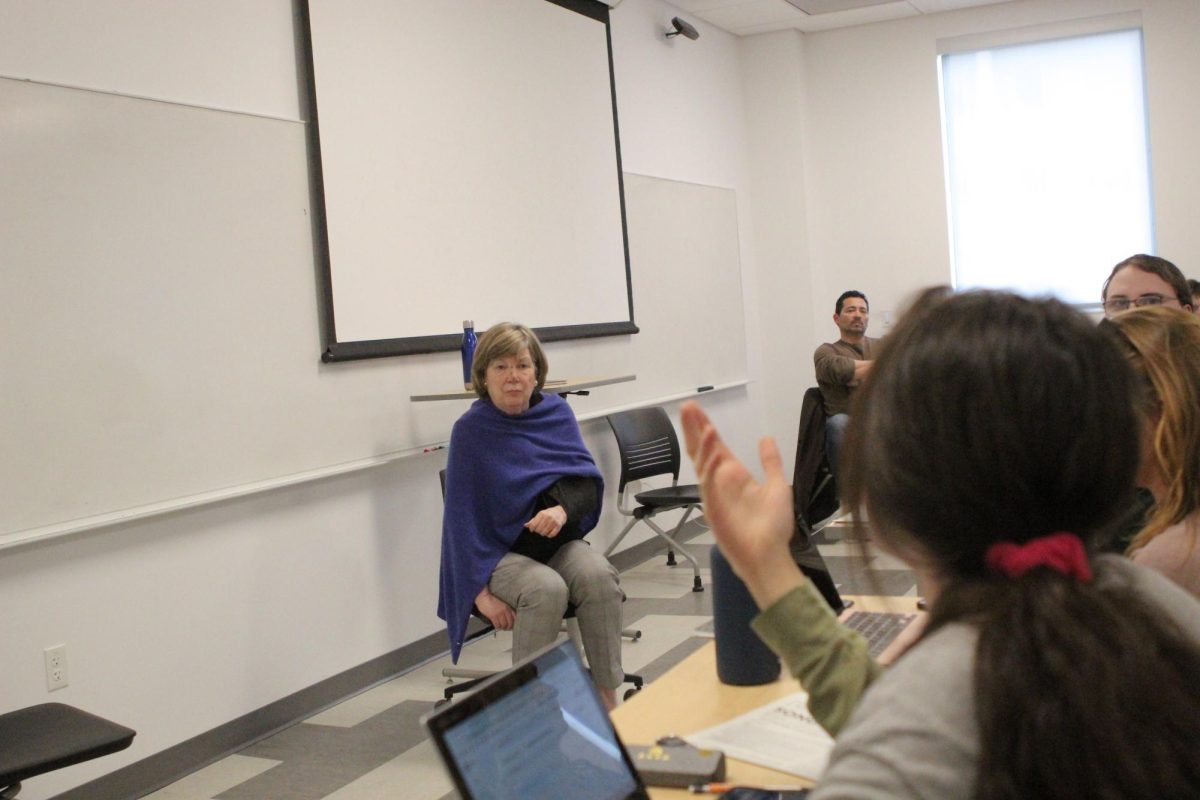
Budget Cuts, DEI, and WGS
Cutrer also addressed concerns about potential impacts on diversity, equity, and inclusion (DEI) initiatives in light of executive orders restricting such programs at the federal level. Cutrer said she plans to work with the university’s attorneys to determine the best course of action. When asked specifically about the elimination of the Women and Gender Studies program, Cutrer did not provide a direct response.
STAR: The Trump administration, including Department of Education, has started demanding and threatening schools that if they do not completely cease any operations in all diversity, equity and inclusion (DEI), that they’ll lose their federal funding. Do you think that we’re in a position not to lose any more money if the administration is given this order or directive to shut down these programs and what will you do?
Cutrer: First I’d talk to an attorney, and I don’t mean that facetiously at all. All of us in higher education are getting this letter. Given the way all of this has worked, we don’t want any of our sister campuses to have a target on their back, right? For me, what higher education is all about is about providing access and transforming lives for the better. And for me, a better life is knowing more. And knowing more means things that you didn’t know before, means diverse opportunities, diverse thoughts. All of those things, which now seem to be, to some people, a bad thing, which I just think is the saddest, most awful thing in the world. That isn’t exactly your question, or an answer to your question. But I think a lot of us are very, very perplexed about how to handle it.
STAR: We’re curious about if that was talked about in discussion when cutting the women’s and gender studies department, as well as everything that the Trump administration was doing with climate action and removing the geology and earth sciences department here. It feels like we’re entirely removing anything that would prepare future generations to deal with climate change.
Cutrer: Yes, it was discussed. Everybody hates the decisions that we had to make and it’s incumbent upon leadership at the university to be sure that any gaps that are left, that those gaps must be covered in some way, in some very good way within the curriculum. Ultimately, I have to make the decisions. Well, the Board of Trustees doesn’t, the way it works in the CSU, they don’t approve or disapprove of budgets, but they could always come back to me and say, “We don’t like what you’re planning,” or the chancellor could come back and say, “We don’t like what you’re planning, change it.” As universities, we each operate within the larger rules and guidelines and executive orders of the system, but we also, to a certain extent, run our universities autonomously. I didn’t wake up one morning and said, this is what we’re going to have to do. Before I got here, there were a series of discussions about what needed to be done. There was data that was collected about our degree programs and other things going on on campus. There were cuts that were made and so forth and when I got here and my job was to do everything I could to get the university on really good financial grounds.
STAR: With the elimination of a number of departments and programs, what are the plans to ensure interdisciplinary learning at Sonoma State so students have a broad range of skills necessary for the job market?
Cutrer: I think we’re actually going to see more interdisciplinary learning. In some cases, people, faculty members who haven’t been literally in the same place before, will now be in the same place and will start talking and working together. As they look at the degree programs they have, what we’re hearing from faculty is that they’re going to want to look for more ways to work together and I think ultimately, that’s for the betterment of our students for more interdisciplinary thinking and learning and problem solving because ultimately what interdisciplinary is about, is about problem solving. The core of interdisciplinary work at Sonoma State seems to be in the Hutchins School, right? A lot of that goes on in the Hutchins School. That’s a great role model for the rest of the campus. We need to do more of that around the campus because it’s great job preparation.
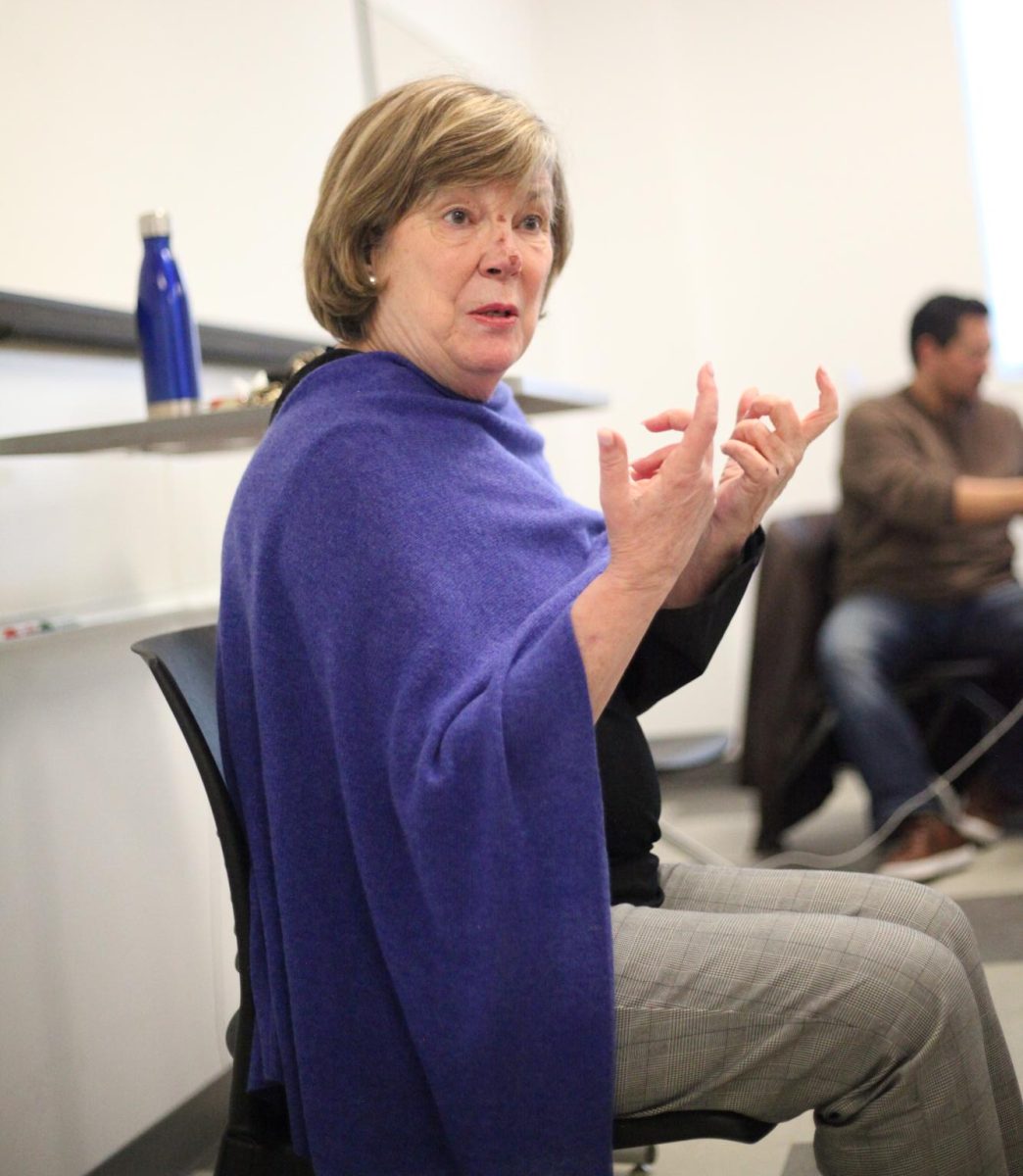
CSU Financial Reserves and Budget Management
With the university facing financial struggles, some have questioned whether reserve funds often referred to as a “rainy day” fund could be used to offset budget cuts. But Cutrer said that wasn’t a viable option.
STAR: Has the administration considered tapping into the $8 billion rainy day reserve funds in the CSU?
Cutrer: Well, first of all, there aren’t $8 billion in rainy day funds.
STAR: So just to clarify, you’re saying the California Faculty Association’s research is incorrect?
Cutrer: I don’t know the source of their information, and my source of information is different from theirs.
STAR: Even if there was $1 billion in the reserves, would it be enough to fund these programs?
Cutrer: That’s a really nice idea, it really is and this is the reason I’m not asking for it. The CSU actually has, about 31 days worth of reserves for the whole CSU. We may have had the highest percentage deficit of the campuses, in part because we’ve had the biggest enrollment decline, but we’re by far, we’re far from the only ones.
STAR: Is there any plans right now to kind of create this alternative way to maintain this sense of community and also engagement for students on campus, since there’s a lot of cuts and eliminations going on right now? It’s kind of dismantling people.
Cutrer: There isn’t a plan as such. I would love for us as administrators to pull some students together and get out of the way and say, what is it that we need to be doing, we need to be investing in, in order to get more student engagement. So, you all need to come up with it. Students should be coming together and saying this is what we want, this is what we need, this is what we think will work.
STAR: What are the plans for the facilities like the gym and the art building moving forward?
Cutrer: Well, they’re wonderful. They all need some work, first of all, right? But they are also wonderful facilities, useful facilities. As I’ve told people, kinesiology uses a lot of the sports facilities for their classes and they will now perhaps have an option to use it even more, but we will have a group that will be looking into it and the options that we know we will be looking into include using those facilities for club sports. There are also opportunities to rent out the facilities to other groups. We don’t have a definitive answer on it yet, but we will pretty soon.
STAR: We were wondering if you and the administration have discussed what the plan is to do with the faculty housing that isn’t being utilized that much in the Petaluma area?
Cutrer: Yes and no in that it’s not utilized much by faculty and staff, but it is utilized by other people in the community. It has enough tenants right now that in effect, it’s paying its mortgage with facilities like that when it would be nice if we could have even more tenancy in it. So, again, we have another revenue stream for the campus. Right now, we can’t do anything about selling it because of the way in which it was financed, the bond with which it was financed. We can’t make any changes for five years, but when we get closer to the five years, I think whoever is here will look again at that question to see if we’re financially better off selling it at that point, or whether we’re better financially holding on to it and running it out.
STAR: Do you have a kind of timeframe for how long you are to remain interim president here at the University and also to connect with that, before this semester started, the chancellor put out that they postponed that start to the president. So what’s the timeframe looking for this?
Cutrer: My understanding is that I get to go home for Christmas, but I’ve also told the chancellor that i will not leave her by herself. My understanding as well is and her understanding, although I don’t want to put words in her mouth, so this is my understanding, not hers, is that the search will be launched. We get through the budget situation for the state and kind of work through where we are as a campus right now that we’d be in a better place to recruit really strong candidates for the position. My hope would be they launched the search this summer, and we have someone new and great and wonderful coming in at the beginning of the year. Don’t hold me to that because, you know, things change.

